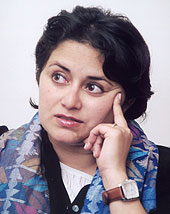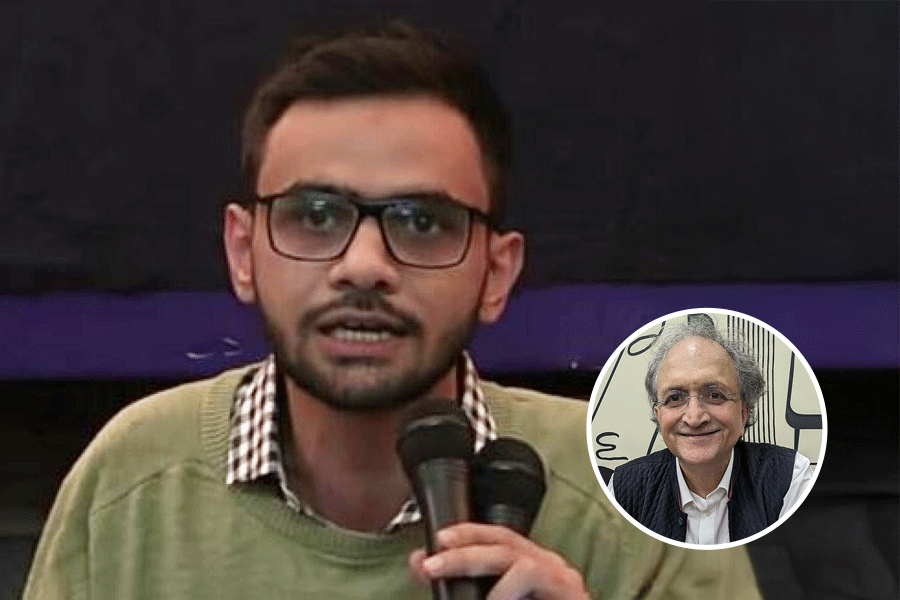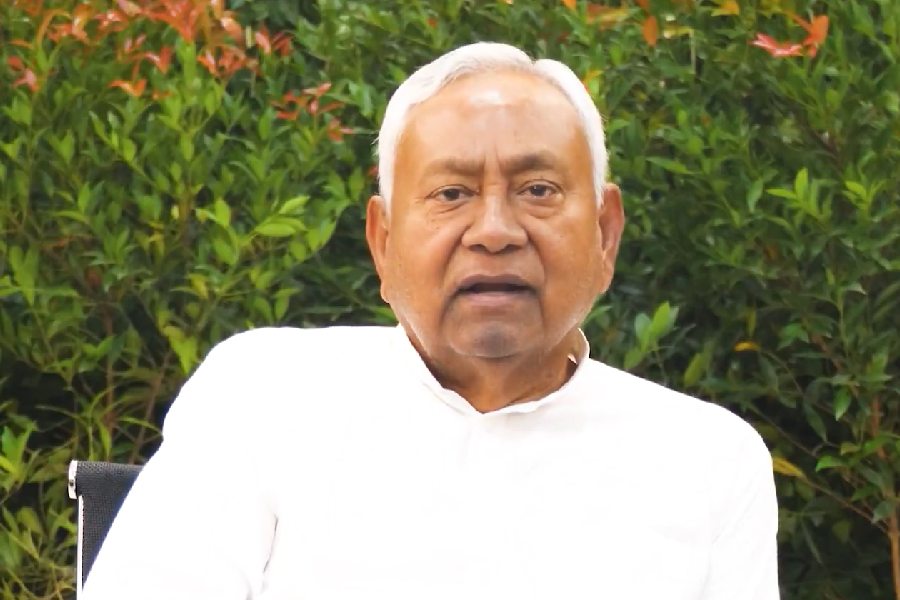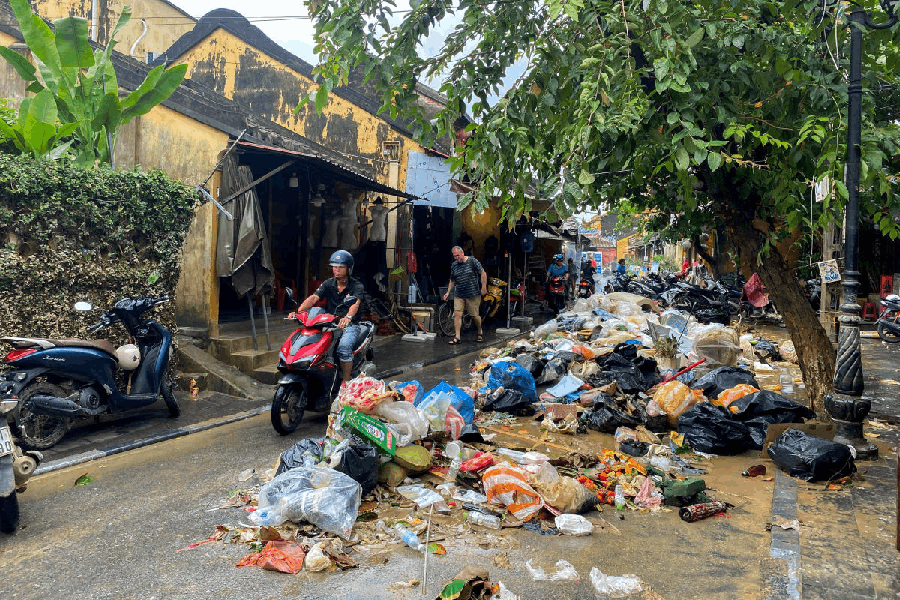 |
 |
 |
| QUESTION TIME: (From top) the author; Mao rebels; Thapa?s book |
In the early months of 2003, when the Nepal government had signed a ceasefire pact with the Maoists rebels, writer Manjushree Thapa decided to trek through the heart of the Red-controlled countryside.Till then, the former Nepalese diplomat?s daughter had viewed the Maoists through a second-hand prism of newspaper headlines and rumours. For most in Kathmandu?s elite circle, of which Thapa is very much a part, the Maoists were like a bunch of ghosts who had come to haunt and destroy their cushioned world.
But there was also a curious collective schizophrenia at work. On the one hand, everyone knew that the radical Leftists looted banks, blew up bridges, fought the army, indulged in barbaric killings, set up their own administrative structure and controlled much of the countryside. And, yet for most in the Nepal capital, they remained shadowy figures in a seemingly faraway land.
More so for the 36-year-old writer who had spent the larger part of her adolescent life reading T.S. Eliot and Jack Kerouac, appreciating Andy Warhol and studying photography in the US. For Thapa, this walk-the-talk journey was not only a first-hand investigation of ?how Kathmandu?s bad politics was playing out in the countryside,? it also became an exploration of the role of women in the Leftist armed insurrection.
?Being a woman writer, it became natural for me to explore the gender angle,? says Thapa, whose fortnight-long journey forms an important part of her latest book, Forget Kathmandu, launched last Monday in the Capital by Penguin.
Sitting in her Hotel Ambassador room, the urbane and attractive writer with a distinctively American accent tells you how for many people, Nepal remains a place they know through tourism brochures.
Few are aware, as Thapa points out, that Nepal has had the highest number of disappeared people in the world or that the Maoists are held in high esteem for their successful movement by other radical Left groups elsewhere. Fewer still know that Nepal consists of 90-odd caste and ethnic nationalities who speak 71 languages and dialects.
And not many would know that for centuries, Nepal has been a feudal society dominated by patriarchy. It is a country where women have traditionally played the silent, invisible role ? as faceless providers with no voice in decision-making. ?The disparity between men and women is deeply structured into the society and economy,? says the writer of the acclaimed novel, The Tutor of History (Penguin 2001).
The question that Thapa sought to examine during her trek through the Maoist-controlled Dailekh, Kalikot and Jumla was whether the Reds had created a new social order with more equitable gender relations in the areas they controlled. After all, the buzz went that the ultra-Leftists were more progressive on women?s issues than any other Nepalese political outfit, that they had carried menstrual rags, considered impure, into temples to change mindsets and that one out of every three Maoists was a woman.
Differentiating between rhetoric from reality was no easy task. But armed with determination ? along with a sleeping-bag and a few kilograms of rice ? Thapa embarked on this unlikely journey, an entertaining and illuminating trek through rocky scrubland, dark forests of giant rhododendrons, snow-capped hills and decrepit villages.
During her journey, Thapa and her travelling companion Malcolm (a British human right activists who didn?t allow her to use his real name) interacted with many Maoists. It was through casual conversation with these men and women ? people such as Comrade Rebel, who sported a red tikka on his forehead, and Comrade Sandesh, who shared his fish with everybody saying: ?Sharing whatever we have is the culture of communists? ? that Thapa offers an insight into their world.
The first Maoist girl she met wanted a lift in their Land Rover when they had just begun their journey. Her name was Durga ? but now they called her Comrade Binita ? and she was going home to visit her family. In an area where most women either went barefoot or wore rubber chappals, the 17-year-old girl had shoes on. Shoes, Thapa contends, are better for running if the soldiers fire at you. Like all party cadres, she carried bombs and once almost used them against the army.
It was Binita who told the author about the large number of women among the radical Reds. ?There?s even an all-woman company,? she said. ?Even the commissars and commanders of the women?s company are women.? The young girl believed that men and women were equal in the Communist Party of Nepal (Maoist). But why were there no women in the Maoist team negotiating with the government, Thapa asked Binita. ?I don?t know,? the girl replied.
It is a question that kept recurring doing the course of the journey, where the nights were spent in the grottiest of hovels, sometimes trying to avoid spiders and, on other occasions, lying alongside heaps of potatoes.
Thapa critiques the absence of women from the top echelons of the ultra-Left hierarchy. She wonders if the women ? or, the teenage girls ? working for the party are actually being used by the men in their ride to power. The truth, though, is that the writer is unable to find even one woman who tells her that she is either unhappy at being a Maoist or is being forced to become a part of the revolution. The girls firmly believed that if the Maoists captured power, gender equations would change in Nepal.
?You see, before, there were only sickles in the hands of girls like me. Sickles and grass,? said a teenager, who was in the military wing of the Maoist army. ?And now there are automatic rifles.?
In the wayside settlement of Raka, deep into Red territory in western Nepal, Thapa met three Maoist girls. The eldest among them was 15; the others were even younger.
Having joined the party a few months earlier, they reared chicken and sheep, grew potatoes and ploughed the fields that belonged to people who had left the village. Yet, they were happy. As one of them said: ?I want to work for the party revolution. I want to fulfil the responsibilities the party gives me. I?ll do anything for the party.?
What Thapa stresses in the book is the fact that the girls don?t have a real alternative. But, at the same time, they also believe that working for the extreme Left party offers them the best possible chance in life. Why else would a 17-year-old girl work for a party for Rs 150 a month, fending for herself and stopping for free meals in the houses of ordinary people? For all its limitations, there is a sense of empowerment.
Thapa comes around to this view by the end of her narrative. She writes, ?If I had grown up in one of these villages, and were young, uneducated, unqualified for employment of any kind, and as a female, denied basic equality with men ? hell, I would have joined the Maoists, too.?
Looking for a gender angle in a revolution is tricky. But despite the baggage of her own liberal and background, Thapa, who also works for Martin Chauthary, a centre for public interest and advocacy, tries to offer a balanced view: ?Undoubtedly, there is more participation of women. But most of them are very young and certainly not decision-makers.?
Her book is more than an examination of gender relations in Maoist Nepal. It?s a book that Thapa says she also wrote to clear her head of the imaginary characters she created for her novel.
Now, having done that, she?d like to go back to writing another novel. ?It?s a political novel with a woman protagonist,? she says. It?s, as they say, fact meeting fiction.











